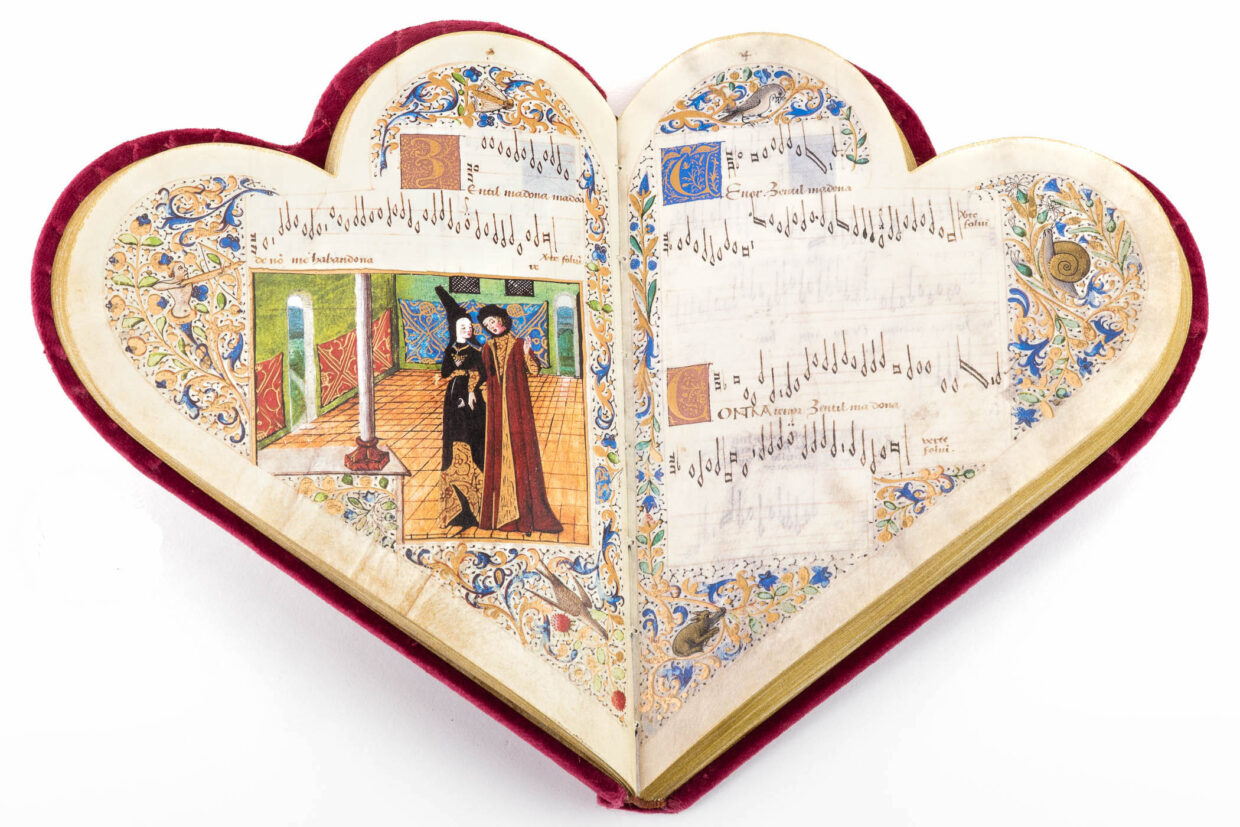
A brief history of heart-shaped books.
Lit Hub wants to wish you a very happy Valentine’s Day—and I’m celebrating by taking a look back at one of my treasured images, that of the heart-shaped book. We don’t see heart-shaped books in the wild anymore, but for a time in the 15th century, they weren’t as rare as you might expect.
To understand the physical object of the heart-shaped book, we have to consider the original religious metaphor. As Eric Jager writes in The Book of the Heart, the image of the heart as a book recording the individual’s life appears in early Christian theology; the book would be read aloud at the Last Judgment. The inner book represented the private self. The first known painted image of the heart-book appeared in a 1485 painting by an anonymous Flemish artist, featuring a man holding an open heart-shaped book next to a Catholic mass. (Implied by the painting: the text in the heart-shaped book, illegible, would be Christ-worshipping.) The heart-book became a popular religious symbol by the late Middle Ages.
But the image didn’t stay simply religious. The book of the heart also became a secular image—instead of Godly text, the book was filled with earthly text about romantic love, or, well, being horny. This book of the heart was a book of the flesh, and the self-reader was studying the ways of love, the quality of their love object, or their own past romantic experiences. Somewhat naturally, this often-evoked image in literature evolved into literal heart-shaped books—cordiform books—which contained love songs or love poems. By performing the love song in one’s “heart,” one gives their heart to their beloved. Take a look at the heart-shaped songbook Chansonnier de Jean de Montchenu:

We don’t see heart-shaped books nowadays, likely because as printing grew more automated, it became less efficient to make interestingly shaped books using traditional tools. But the idea of the heart-shaped book lives on in the heart-shaped Valentine’s Day card, which suggests the “gift” of one’s heart to the receiver. Also, I’m hoping that this year we bring back heart-shaped books. In a time of bodily rooted fear (COVID-19), there’s added utility in a substitute love object. I want to hold an author’s heart!
[Lapham’s Quarterly, UChicago Press, American Bookbinders Museum, Erik Kwakkel, Word Wenches]
Walker Caplan
Walker Caplan is a Staff Writer at Lit Hub and a writer/performer from Seattle.



















